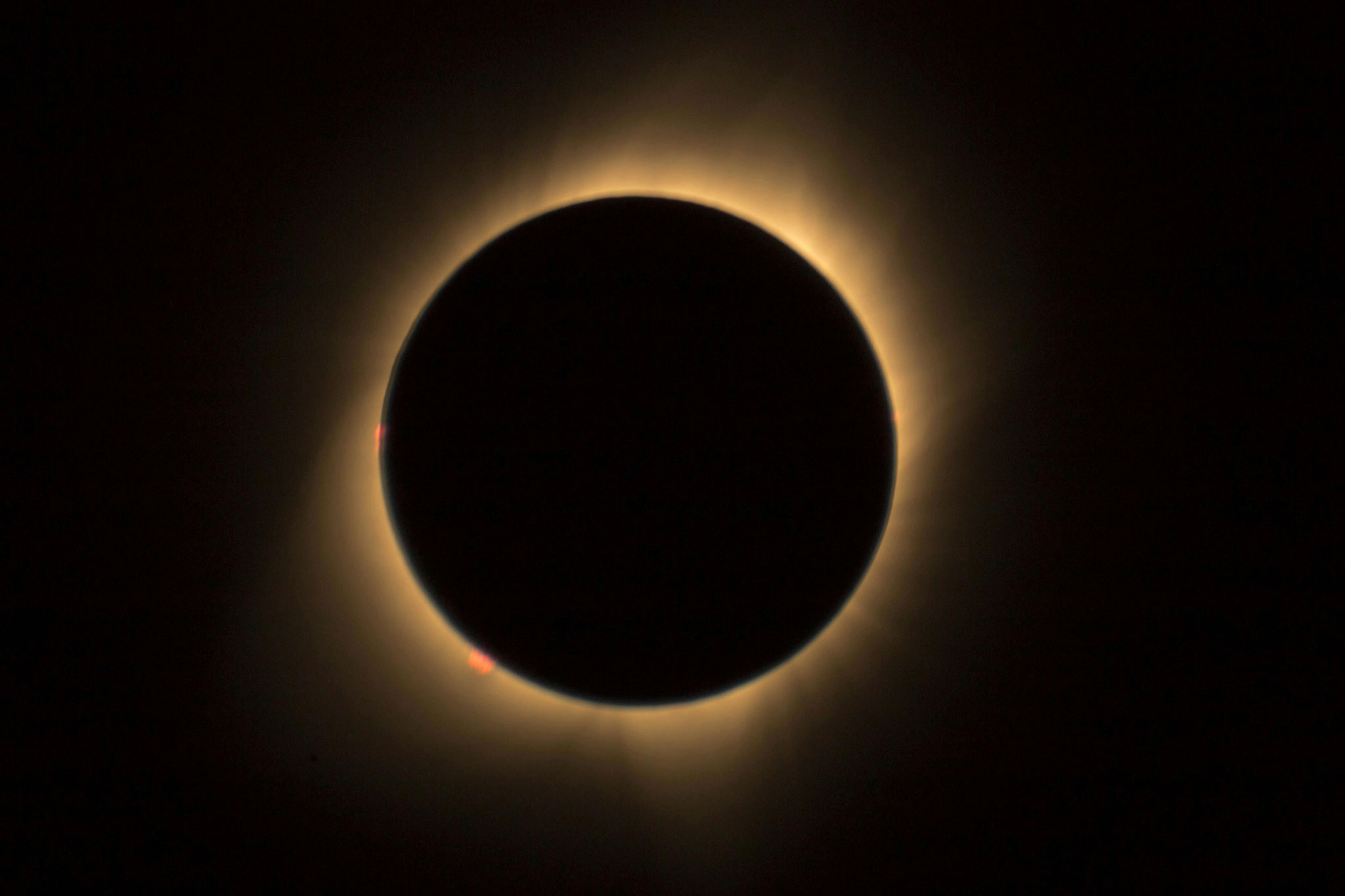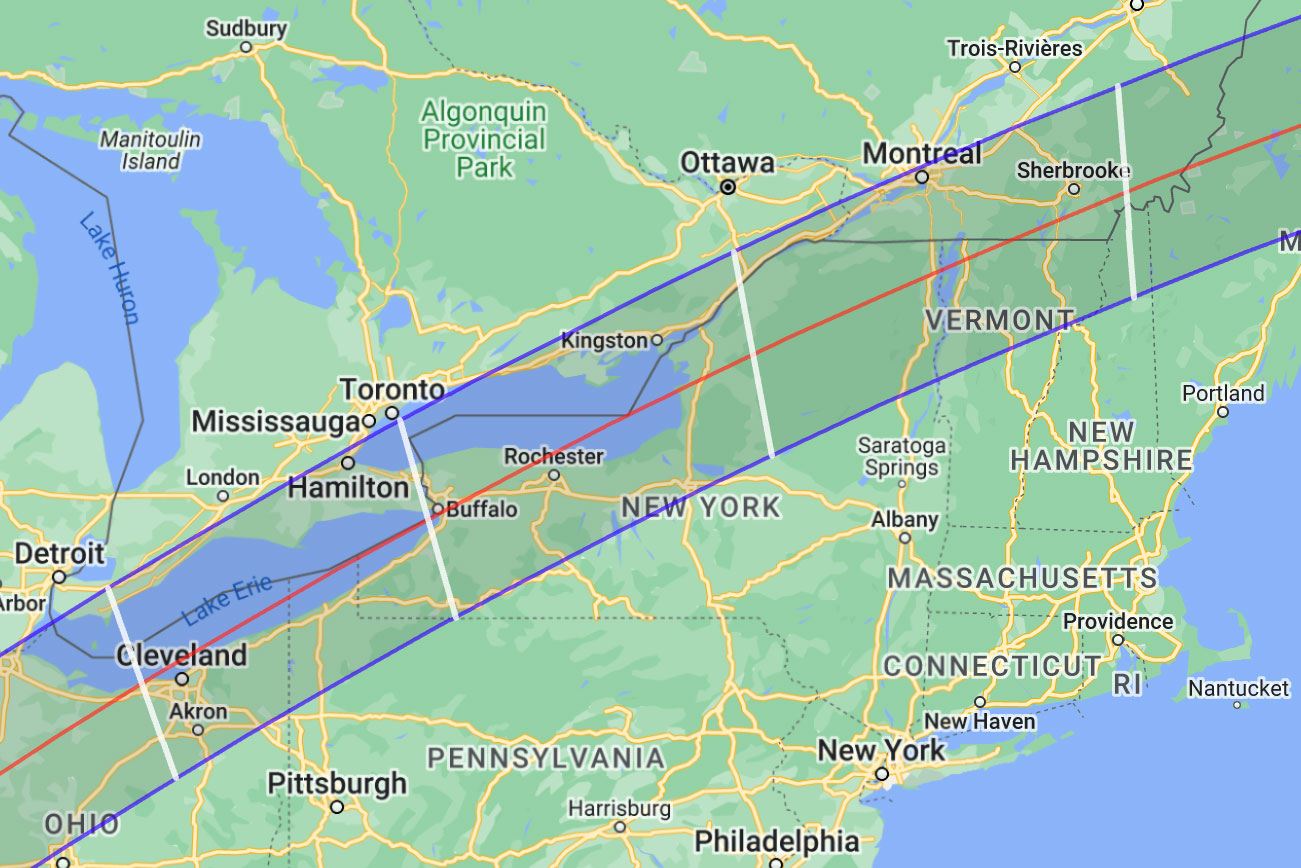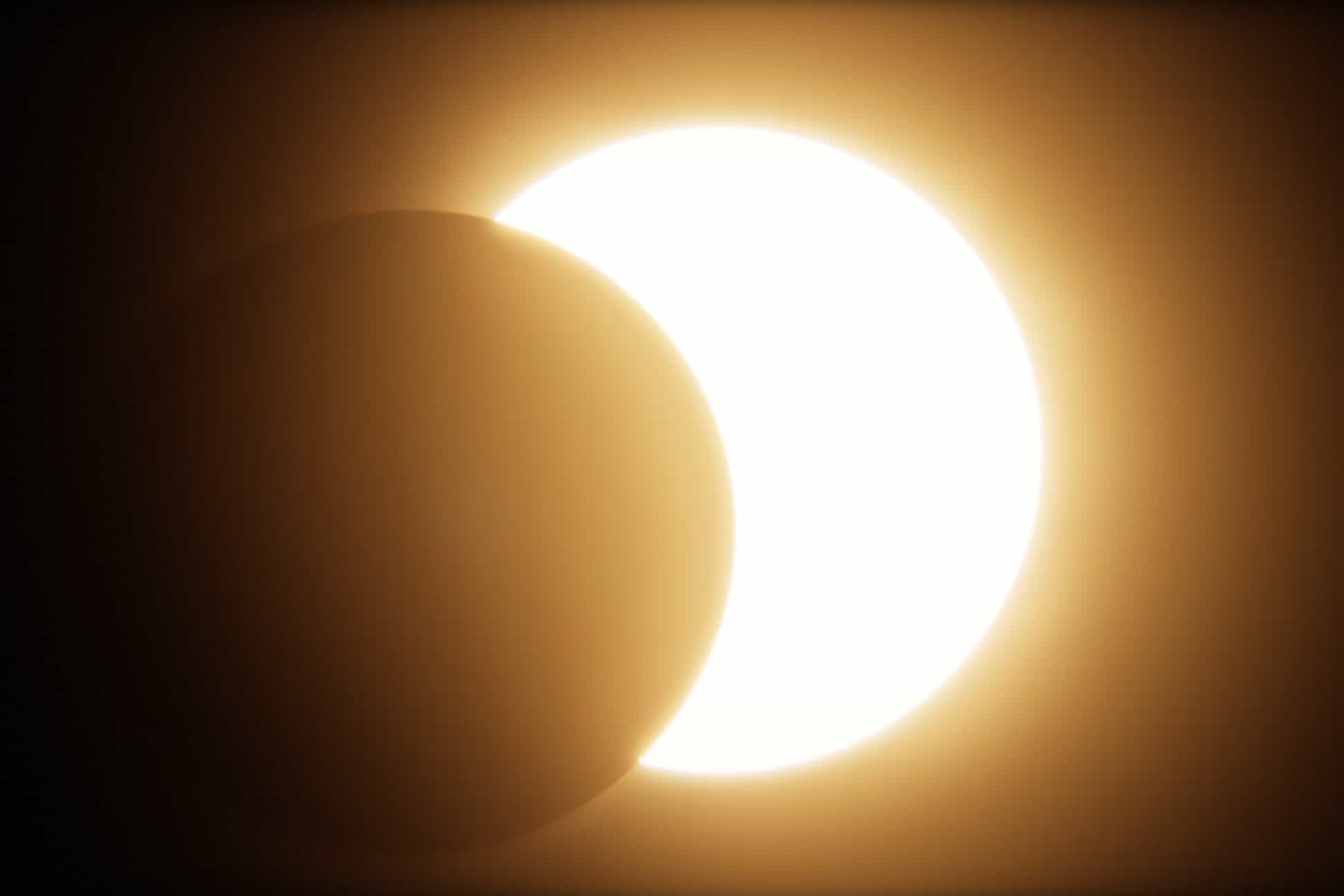Rare solar eclipse preparations underway; here’s where and when to see it in Ontario
Published March 13, 2024 at 2:55 pm

A rare and spectacular total solar eclipse happens in less than a month in Ontario and people are getting ready.
A solar eclipse happens when the moon passes between the sun and the earth. This happening over Ontario on Monday, April 8 and should be visible either as a partial or total solar eclipse across parts of North America, according to the Canadian Space Agency.
People have been planning for this event for several months.
Bookings for Airbnbs increased 1,000 per cent for areas in the “path of totality” or where the sun will be completely covered during the eclipse. Montreal and the Niagara Region were two of the most popular destinations to view the eclipse.
And police are also getting ready for the event — Niagara Regional Police put out a special message.
“Are you one of the 1000s traveling to Niagara for the April 8 solar eclipse?” Niagara Region Police said in a social media post. “Are you prepared in case of traffic congestion? Have your car fuelled up, extra water, and snacks.”
When and where to see the total eclipse
In Ontario, the solar eclipse is expected to start a few minutes after 2 p.m. and last for about two and a half hours but the best time to view it will be after 3 p.m.
The sun will be fully eclipsed at 3:18 p.m. for about three minutes in Niagara Region with slightly later times as you move east.
The path of totality passes through Niagara, Kingston, Hamilton, Burlington, parts of Oakville, Port Hope, Cobourg, Kingston, Montreal, the Eastern Townships of Quebec, and then through the Maritime provinces, Ilana MacDonald, public outreach, communications and event strategist for Dunlap Institute for Astronomy and Astrophysics, tells insauga.com.
At that time, the sky will turn dark and stars may be visible — much like the darkness you get right after sunset. For those outside of the path of totality, in areas such as Mississauga, Brampton, Toronto and Durham Region, a partial eclipse will be visible.
“The difference between a total eclipse and a partial eclipse is like night and day, literally,” says MacDonald.
During the total eclipse, the moon completely covers the disk of the sun so no light is being emitted directly from the sun. The outer layers of the sun called the corona are visible.
During a partial eclipse, the moon is only partially covering the sun. It may get a bit darker but it will remain much like a normal day.
Those with special, protective glasses will be able to see a small crescent covering the sun.
“It’ll still look very cool but it’s not it’s not the same as a total eclipse,” MacDonald says.
To find the exact time and locations for the eclipse, see an interactive map here.

Path of totality map via eclipsewise.com
Safety
Those who plan to view either the partial or total eclipse will need eye protection. Looking directly at the sun can lead to serious problems such as partial or complete loss of eyesight, according to the Canadian Space Agency.
International standard (ISO) certified eye protection glasses with special filters are needed to watch all the phases of a solar eclipse.
But when the sun is totally covered, in those areas in the path of totality, you can remove the glasses for a brief time. This would be only when you can no longer see anything with the glasses on, said MacDonald.
The protective glasses are very opaque and only the sun is visible with them on. Nothing else is bright enough, she said.
The glasses should be worn at all times when viewing the partial eclipse.
Where to get eye protection
Certified eye protection may be available for free at some schools or at public library workshops. The Royal Astronomical Society of Canada also had some on sale but are currently sold out. They are expected to get more in stock.
Those who want to purchase the eyewear should make sure they get the ISO-approved eclipse glasses.
There is a list of approved glasses for sale on the American Astronomical Society website. Prices range from $5 to $20.
Traffic
Drivers should anticipate traffic delays getting to and from their destination in southern Ontario on April 8 and are reminded to exercise caution and patience, an OPP spokesperson said in a statement to insauga.com.
Sharing the road safely is particularly important in higher-than-normal traffic volumes.
The OPP asks people to not wear eclipse glasses while driving and not to photograph or video the eclipse while driving.
They ask drivers to not stop or pull over on the shoulder of a roadway to see the eclipse but instead, find a safe place to get off the road.
“Ontario residents and tourists are encouraged to make road safety a top priority when travelling to take part in planned solar eclipse events,” the statement read.
The Royal Astronomical Society of Canada suggests those travelling for the eclipse arrive a day or two earlier and stay an additional night.

Events
Niagara Parks has a full list of events specifically for the eclipse on April 8 including interactive workshops and activities for kids at Table Rock Centre and hands-on activities related to STEM learning at the Butterfly Conservatory. There’s even a free concert at Queen Victoria Park.
There are also educational events at local libraries. Universities, such as the University of Toronto and Queen’s Unversity, have special events for students.
Next eclipse
The eclipse on April 8 is a once-in-a-lifetime event for North America. The next total solar eclipse in eastern Canada will be in 2079. The next time a total solar eclipse is happening directly over Toronto is 2144, said MacDonald.
If you are willing to travel, there are total eclipses once every year and a half somewhere in the world but they are often not in populated areas. There are so-called “eclipse chasers” who travel to see these events, said MacDonald.
“There’s a whole group of people who, see a total eclipse once and then they want to travel to the next one,” she said.
More information
Destination Ontario has more information on events happening for the eclipse along with a song playlist.
For more on the eclipse, see the Dunlap Institute for Astronomy and Astrophysics page here or the Royal Astronomical Society of Canada page here.
Lead photo: Drew Rae
INsauga's Editorial Standards and Policies








